
On January 12, 2017, Salt Lake City Mayor Jackie Biskupski signed the Sustainable Infrastructure Executive Order, calling for citywide collaboration on sustainability.


On January 12, 2017, Salt Lake City Mayor Jackie Biskupski signed the Sustainable Infrastructure Executive Order, calling for citywide collaboration on sustainability.
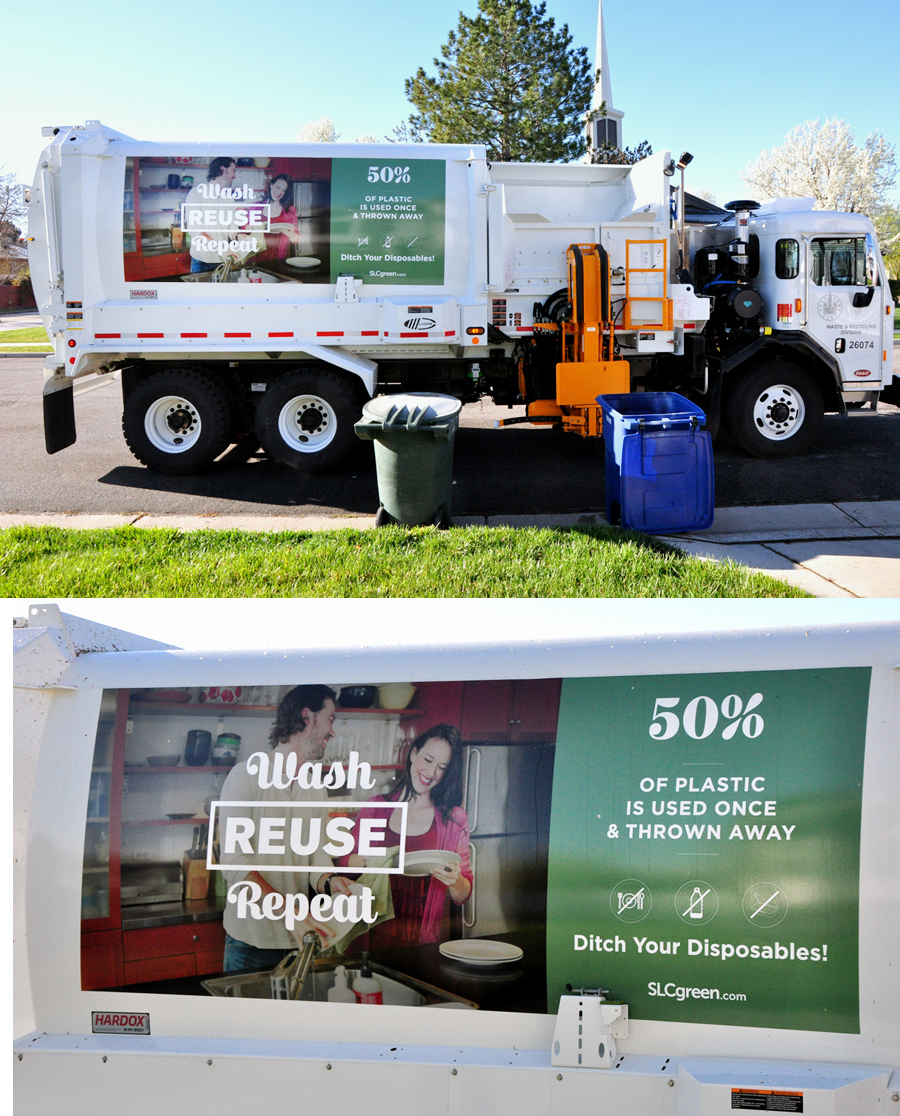
By Kyle Strayer
Keep an eye out for the city’s newest recycling trucks with our “Ditch Your Disposables” image.
The wrap covers eight of the new trucks, which have replaced older models. They are the newest addition to the city’s fleet of 34 trucks. (Check out previous years’ truck wraps here and here.)
Beyond the nifty new wrap, these state-of-the-art recycling trucks have a dynamic mechanical arm, multiple camera feeds displayed on the dashboard, two on-board trash compactors, and can haul 9 – 10 tons of material each.
Each truck has a low-emission profile too– three are Compressed Natural Gas (CNG) and five are new clean diesel (100% of Salt Lake City’s refuse trucks are either CNG or clean diesel).
If you live in SLC, every item you recycle is eventually hauled off in one of the City’s trucks and taken to a recycling facility. These trucks travel miles of city streets every day, collecting material and sending it off to be made into something new.
Their widespread visibility is one reason we use them for public education.
So back to the new wrap: Why the slogan “Wash, Reuse, Repeat”?
Simply washing your durable products– whether a glass, coffee mug, silverware, or plate– instead of opting for disposables can save tons of material from going to the landfill each year.
(Sometimes disposable products are recycled, but usually they end up in the landfill. The waxy lining on paper coffee cups and plates makes them non-recyclable; and the difficult size and variable components of plastic utensils makes them ill-suited for recycling.)
Remember the tag line “Reduce, Reuse, Recycle”?
We think the first and second words and resulting behaviors need a little more love.
“Wash Reuse Repeat” is a new spin on the original slogan, reminding everyone that: Continue reading
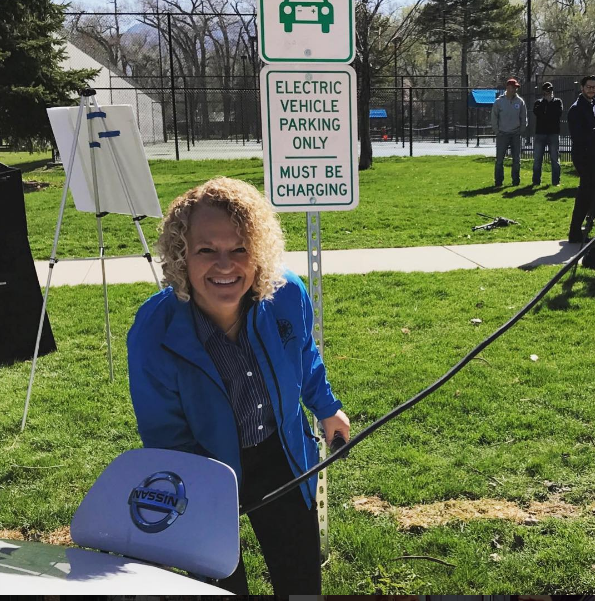
Mayor Biskupski charges up an electric vehicle using one of the 28 new Level 2 EV charging ports located across Salt Lake City.
Salt Lake City Mayor Jackie Biskupski and DAQ Director Bryce Bird announced Wednesday the addition of 28 new electrical vehicle charging ports across the city.
The new “smart” Level 2 EV charging stations are located at 12 sites—new and existing—across Salt Lake City and have replaced five older units.
Locations include the International Peace Gardens in Jordan Park, Sorenson Multicultural Center, Sunnyside Avenue near Hogle Zoo, Pioneer Park, the Forest Dale Golf Course, and more.
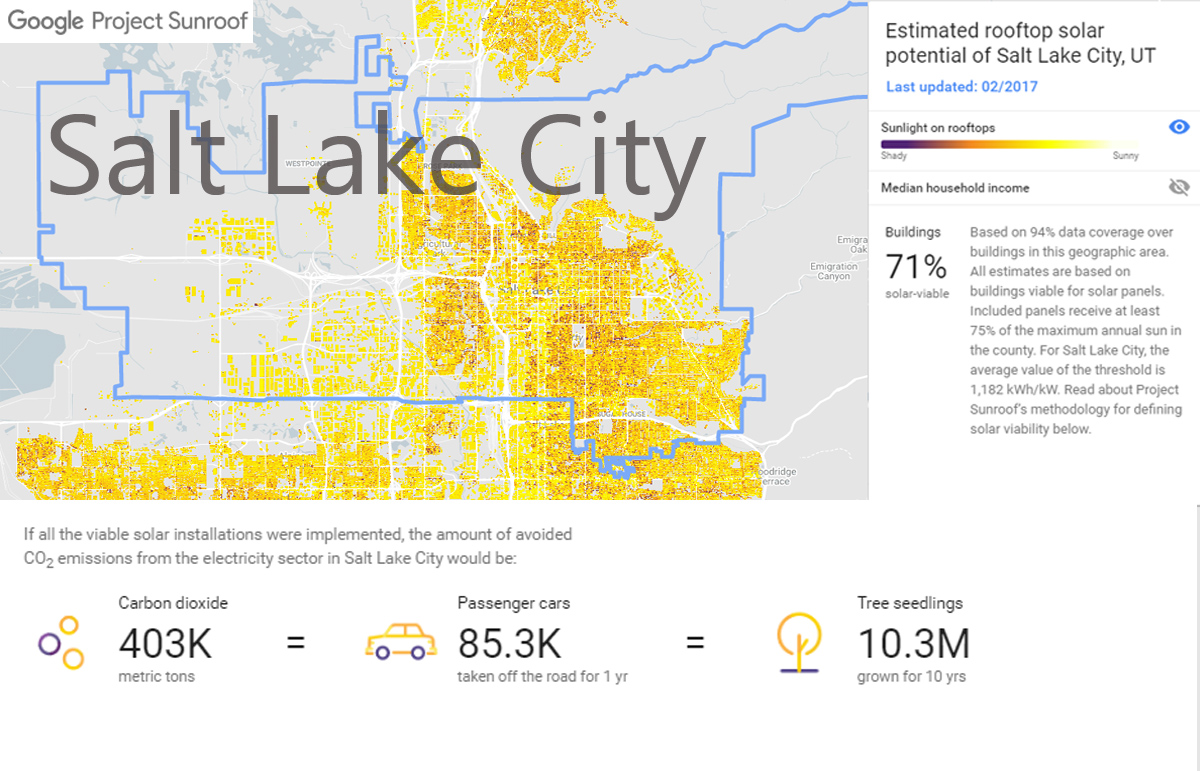
Google’s Project Sunroof shows Salt Lake City’s massive solar potential. Click the image to navigate to the Sunroof site to explore the city’s energy potential.
Did you know that more solar energy reaches Earth in just five days than all of the fossil fuel reserves combined? Harnessing that solar energy is a critical part of switching to renewable energy and creating a more sustainable community, especially for sunny Utah.
And while the $2,000 state solar tax credit is set to phase out by 2021, there’s still enormous room for growth.
Potential contamination from dry cleaning operations at the VA Hospital in the 1970s have led the EPA and Veterans Administration to study and seek remediation for a PCE groundwater plume on the east bench in Salt Lake City. The plume is located generally within the area bounded by 500 South and Michigan Avenue and between Guardsman Way and 1100 East.
“PCE contamination was first detected in this area in the 1990s during routine sampling of the Mount Olivet Cemetery irrigation well. As a result of PCE discovery at this location, the PCE plume was referred to as the Mount Olivet Cemetery Plume. Subsequent investigations proceeded, including a 1995 report by the State of Utah. This report was unable to determine where the PCE originated, but pointed out that the George E. Wahlen VA Medical Center (VAMC) operated a dry cleaning facility that utilized PCE on site in the late 1970s.”
The Utah Legislative Session is in its final days. All proposed bills must be passed before midnight on March 9.
Salt Lake City has staff who attend important hearings, speak to our legislators, and represent the City’s interests in the 45-day session. Here in the Sustainability Department, we closely follow important bills particularly as they relate to air quality, energy, food, and other sustainability initiatives.
One of the most impactful ways to improve air quality is to fully fund the state agencies that must research and regulate it. This is a common sense measure that Salt Lake City supports. Because it is not under our purview to regulate air quality permits, emissions, or compliance with the federal Clean Air Act, we want to see the State’s Division of Air Quality– which does undertake those tasks–receive the funding they need to do their jobs effectively.
However, receiving their full appropriations request is never a sure thing.
In the waning days of the 2017 session, we hope the Utah Legislature will support clean air funding and other bills to reduce pollution.
For more information, please read the below copy of Breathe Utah’s recent letter to the Executive Appropriations Committee. To stay informed on air quality legislation, please visit HEAL Utah, Breathe Utah, Utah Clean Energy, or Utah Physicians for a Healthy Environment.
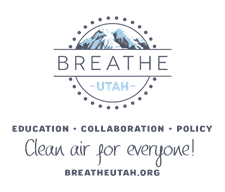
March 8, 2017
To: The Honorable Members of the Executive Appropriations Committee
Re: Budget for the Division of Air Quality Continue reading
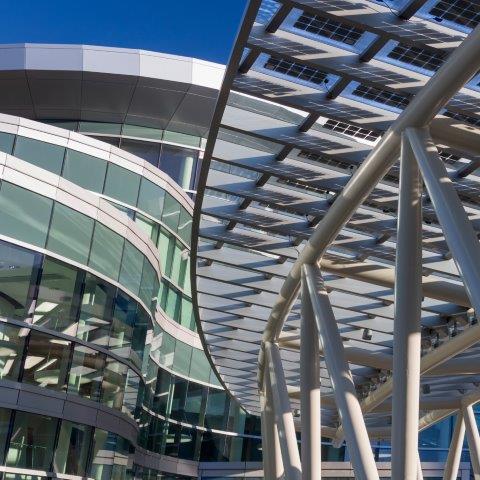
Salt Lake City’s Public Safety Building is the first Net Zero facility of its kind in the country. Even so, energy benchmarking and tune-ups helped us realize even more dollar and emissions savings.
Did you know that our buildings, homes, and small businesses contribute over a third of the pollution that obscures the valley during the winter?
Also known as “area sources,” this sector is the second-largest source of emissions and is forecasted to become the largest one in the coming years (as cars continually get cleaner due to federal regulations).
This is why everything we can do to reduce emissions from our homes and buildings can make a difference to our environment and public health. It’s also why the City is focused on educating residents and businesses about the crucial role of efficiency to our airshed and to our carbon footprint. To this end, we provide guides for home improvements, including details on thermostat controls, home insulation and efficient appliances to help move residential buildings toward a cleaner energy future.
Our skyline’s largest buildings also have a role to play. While there is no “silver bullet” for wiping away all of Salt Lake City’s air pollution problems, the city’s commercial buildings can help simply by measuring their energy usage and making efficiency improvements where feasible. Continue reading
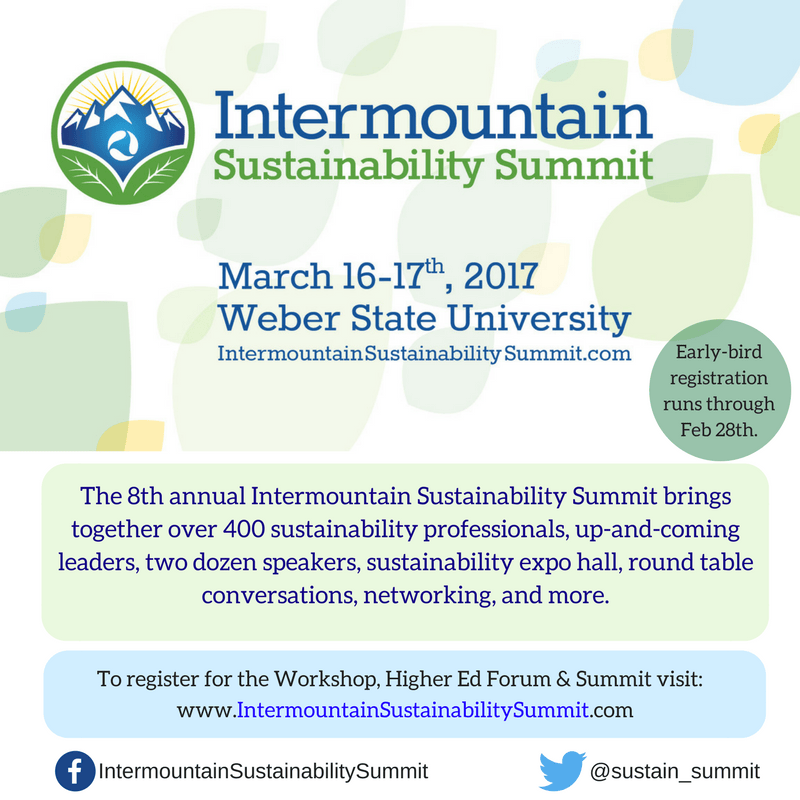
SLCgreen is proud to be a part of the 8th annual Intermountain Sustainability Summit. Our Department Director Vicki Bennett and City Energy Project Advisor Wendy Lee will be speaking on the 17th. To register for the Summit click here to view student and professional registration rates.
Are you interested in the nitty gritty of recycling?
In learning why plastic bags are so hard to deal with?
Or what happens when garbage gets sent to the landfill?
Would you like to become a greater champion for reducing, reusing, and recycling in our community?

Then consider joining Salt Lake City’s 2017 “Master Recycler program!”
The program has been providing in-depth education about recycling, composting, and solid waste management to Salt Lake community members since 2015. It gives participants a behind-the-scenes look at Salt Lake City’s waste management system from bin to recycling plant.
Our mission is “to create a network of champions who are trained in waste reduction strategies and are able to assist with outreach and engagement in the Salt Lake City community.”
By learning from outreach experts and visiting waste management facilities, Master Recyclers are empowered to educate their own communities about all aspects of waste reduction.
Everyone is welcome to participate! Registration is open until the class is full.
by Avery Driscoll
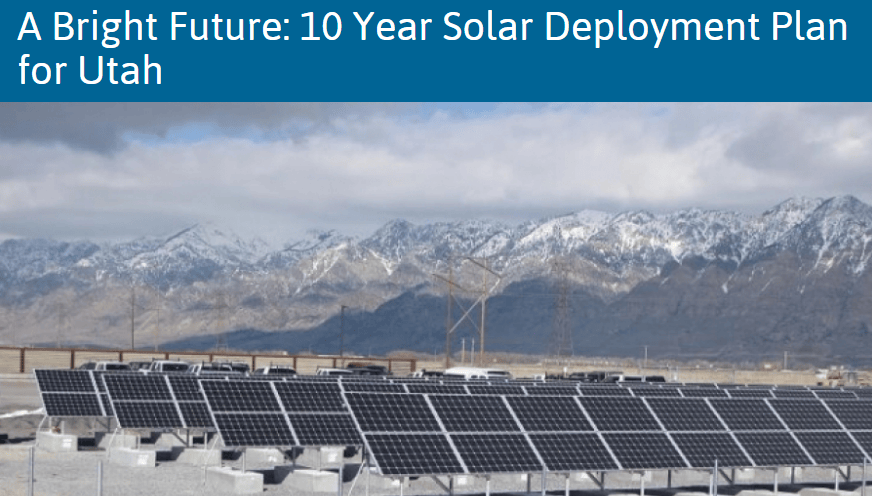
Solar’s been in the news a lot lately. Tax incentives, rate structures, and more have been keeping policy makers, utility staff, and renewable advocates busy.
One reason is that solar is growing at an exponential rate! In fact, Utah is now the 16th largest solar producer in the country.
Our state’s rooftop solar energy production has grown from one-tenth of a megawatt to an estimated 140 megawatts in just ten years. This means that the market for rooftop solar power has grown by 140,000% in a decade, and that doesn’t even include the increase in utility-scale production!
In order to ensure that solar production can continue to grow, the local non-profit Utah Clean Energy recently released A 10 Year Solar Deployment Plan for Utah, which was produced in partnership with Salt Lake City. Continue reading